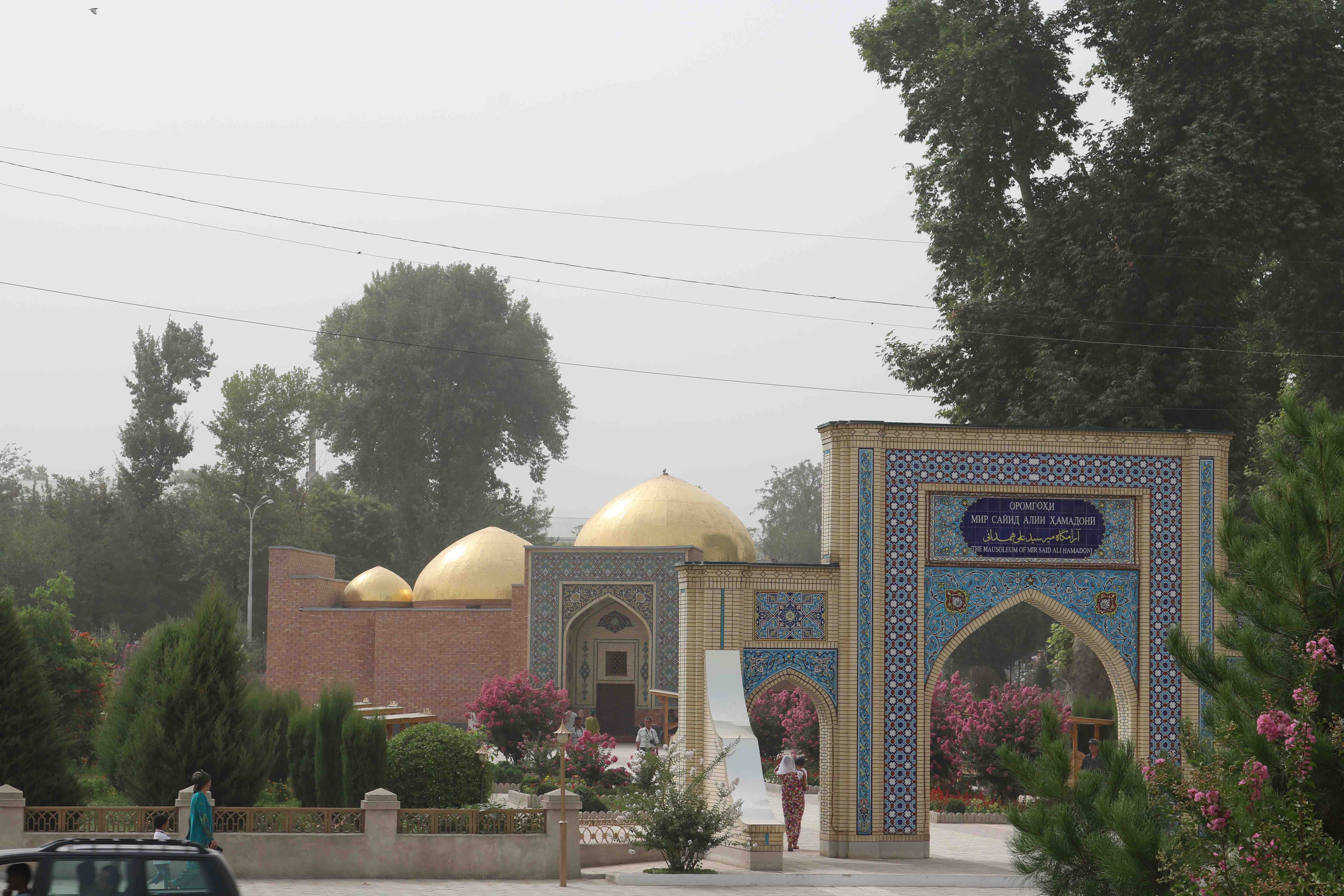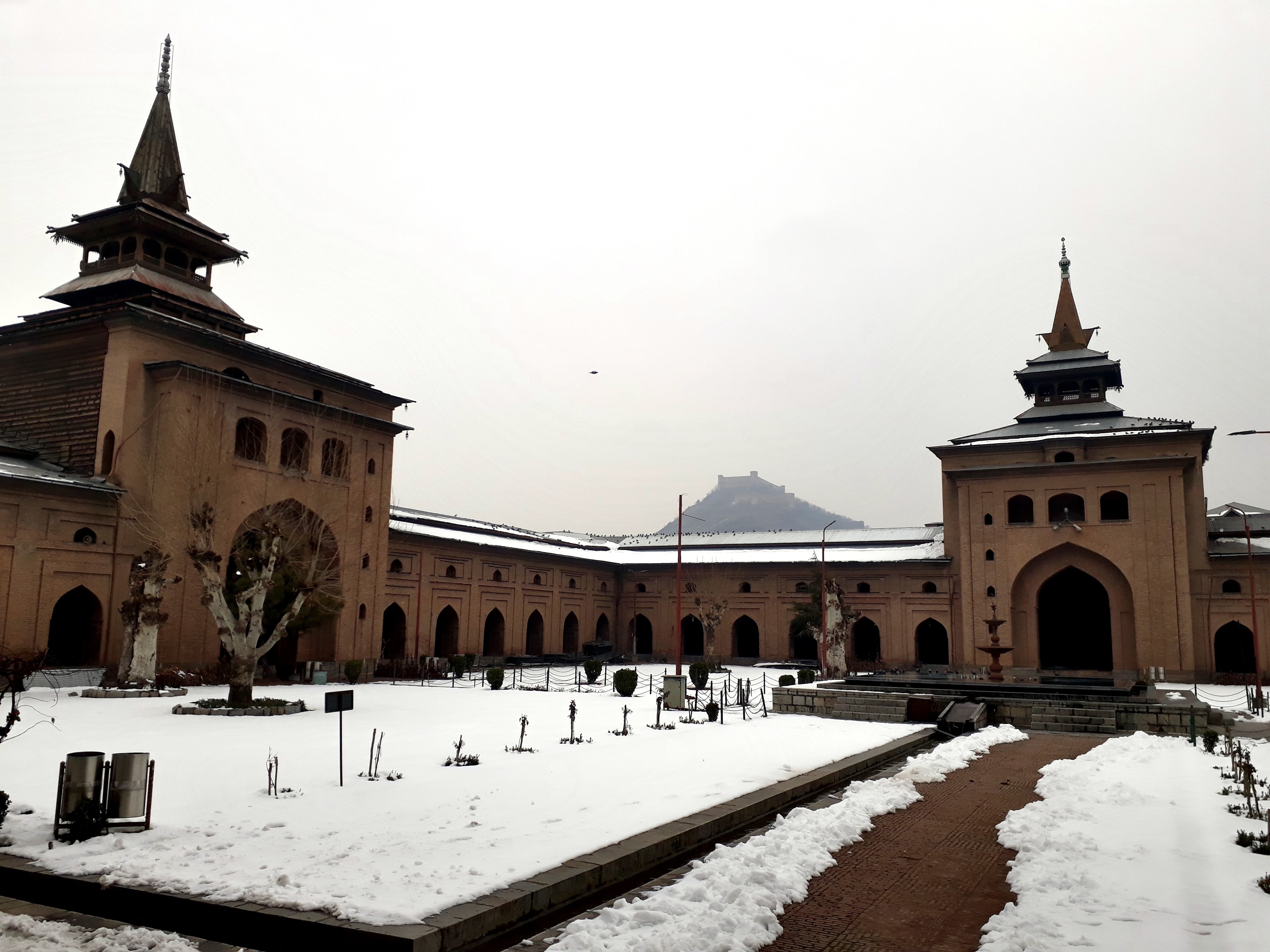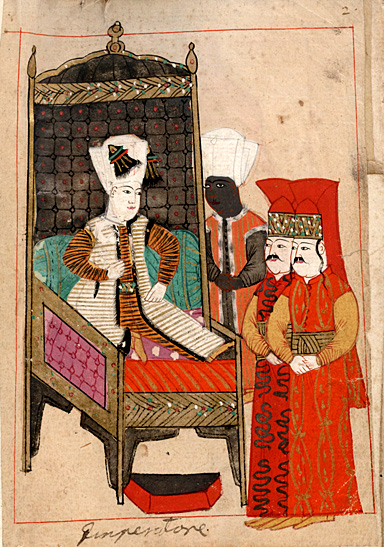|
Shah Mir
Shams-ud-Din Shah Mir () was a ruler of Kashmir and founder of the Shah Mir dynasty. Shah Mir is believed to have come to Kashmir during the rule of Suhadeva (), where he rose to prominence. After the death of Suhadeva and his brother Udayanadeva, Shah Mir proposed for marriage to Kota Rani, she refused and continued her rule for five months till 1339 and appointed Bhutta Bhikshana as prime minister. After the death of Kota Rani, Shah Mir established his own kingship, founding the Shah Mir dynasty in 1339, which lasted till 1561. Origin There are two theories regarding Shah Mir's origin. Some Persian chronicles of Kashmir describe Shah Mir as a descendant of the rulers of Swat. Historian A. Q. Rafiqi thinks it more likely that he was a descendant of Persian or Turkic immigrants to Swat. It has also been suggested that he belonged to a Sufi or Qadiri family. Some scholars state that the Panjgabbar valley, the location described by Jonaraja, was actually peopled by Khasas an ... [...More Info...] [...Related Items...] OR: [Wikipedia] [Google] [Baidu] |
Sultan
Sultan (; ar, سلطان ', ) is a position with several historical meanings. Originally, it was an Arabic abstract noun meaning "strength", "authority", "rulership", derived from the verbal noun ', meaning "authority" or "power". Later, it came to be used as the title of certain rulers who claimed almost full sovereignty (i.e., not having dependence on any higher ruler) without claiming the overall caliphate, or to refer to a powerful governor of a province within the caliphate. The adjectival form of the word is "sultanic", and the state and territories ruled by a sultan, as well as his office, are referred to as a sultanate ( '. The term is distinct from king ( '), despite both referring to a sovereign ruler. The use of "sultan" is restricted to Muslim countries, where the title carries religious significance, contrasting the more secular ''king'', which is used in both Muslim and non-Muslim countries. Brunei and Oman are the only independent countries which retain the ti ... [...More Info...] [...Related Items...] OR: [Wikipedia] [Google] [Baidu] |
Muslim
Muslims ( ar, المسلمون, , ) are people who adhere to Islam, a Monotheism, monotheistic religion belonging to the Abrahamic religions, Abrahamic tradition. They consider the Quran, the foundational religious text of Islam, to be the verbatim word of the God in Abrahamic religions, God of Abraham (or ''Allah'') as it was revealed to Muhammad, the Muhammad in Islam, main Islamic prophet. The majority of Muslims also follow the teachings and practices of Muhammad (''sunnah'') as recorded in traditional accounts (''hadith''). With an estimated population of almost 1.9 billion followers as of 2020 year estimation, Muslims comprise more than 24.9% of the world's total population. In descending order, the percentage of people who identify as Muslims on each continental landmass stands at: 45% of Islam in Africa, Africa, 25% of Islam in Asia, Asia and Islam in Oceania, Oceania (collectively), 6% of Islam in Europe, Europe, and 1% of the Islam in the Americas, Americas. Addition ... [...More Info...] [...Related Items...] OR: [Wikipedia] [Google] [Baidu] |
Mir Sayyid Ali Hamadani
Mir Sayyid Ali Hamadani ( fa, میر سید علی همدانی; CE) was a Persian scholar, poet and a Sufi Muslim saint of the Kubrawiya order. He was born in Hamadan, Iran and preached Islam in Central Asia and Kashmir as he travelled to practice Sufism. He died in Kashmir and was buried in Khatlan, Tajikistan in 1384 CE, aged 71–72. Hamadani was also addressed honorifically throughout his life as the ''Shāh-e-Hamadān'' ("King of Hamadan"), ''Amīr-i Kabīr'' ("the Great Commander"), and ''Ali Sani'' ("second Ali"). Early life The title "Sayyid" indicates that he was a descendant of the Islamic prophet Muhammad, possibly from both sides of his family. Hamadani spent his early years under the tutelage of Ala ud-Daula Simnani, a famous Kubrawiya saint from Semnan, Iran. Despite his teacher's opposition to Ibn Arabi's explication of the ''wahdat al-wujud'' ("unity of existence"), Hamadani wrote ''Risala-i-Wujudiyya'', a tract in defense of that doctrine, as well as tw ... [...More Info...] [...Related Items...] OR: [Wikipedia] [Google] [Baidu] |
Sikandar Butshikan
Sikandar Shah (Sikandar Butshikan – "Sikandar, the Iconoclast") was the sixth sultan of the Shah Miri dynasty of Kashmir from 1389 to 1413. Sources The only contemporaneous source that exists is the Rajatarangini (lit. Flow of Succession of Kings) by Jonaraja. Jonaraja was the Brahmin court-poet of Sikandar's successor Zain-ul-Abidin and was commissioned to continue Kalhana's Rajatarangini. One manuscript of his work—edited between 1561 and 1588 by an anonymous person using information from other sources—emends certain portions of the text in the margins; he is conventionally called (and the work, Ps-JRT) in scholarship. Extant Persian sources, including Baharistan-i-shahi (anon.), Tohfatu'l-Ahbab (anon.) and Tarikh-i-Kashmir corpus, were written relatively later and drew from recensions of Rajatarangini(s) but they provide considerable additional information. These were later used by authors starting from Abul Fazl, the first chronicler from outside Kashmir and N ... [...More Info...] [...Related Items...] OR: [Wikipedia] [Google] [Baidu] |
Sultan Jamshed
Sultan (; ar, سلطان ', ) is a position with several historical meanings. Originally, it was an Arabic abstract noun meaning "strength", "authority", "rulership", derived from the verbal noun ', meaning "authority" or "power". Later, it came to be used as the title of certain rulers who claimed almost full sovereignty (i.e., not having dependence on any higher ruler) without claiming the overall caliphate, or to refer to a powerful governor of a province within the caliphate. The adjectival form of the word is "sultanic", and the state and territories ruled by a sultan, as well as his office, are referred to as a sultanate ( '. The term is distinct from king ( '), despite both referring to a sovereign ruler. The use of "sultan" is restricted to Muslim countries, where the title carries religious significance, contrasting the more secular ''king'', which is used in both Muslim and non-Muslim countries. Brunei and Oman are the only independent countries which retain the ti ... [...More Info...] [...Related Items...] OR: [Wikipedia] [Google] [Baidu] |
Shah Mir Tomb
Shah (; fa, شاه, , ) is a royal title that was historically used by the leading figures of Iranian monarchies.Yarshater, EhsaPersia or Iran, Persian or Farsi, ''Iranian Studies'', vol. XXII no. 1 (1989) It was also used by a variety of Persianate societies, such as the Ottoman Empire, the Kazakh Khanate, the Khanate of Bukhara, the Emirate of Bukhara, the Mughal Empire, the Bengal Sultanate, historical Afghan dynasties, and among Gurkhas. Rather than regarding himself as simply a king of the concurrent dynasty (i.e. Culture of Europe, European-style monarchies), each Iranian ruler regarded himself as the Shahanshah ( fa, شاهنشاه, translit=Šâhanšâh, label=none, ) or Padishah ( fa, پادشاه, translit=Pâdešâh, label=none, ) in the sense of a continuation of the original Achaemenid Empire, Persian Empire. Etymology The word descends from Old Persian ''xšāyaθiya'' "king", which used to be considered a borrowing from Median language, Median, as it wa ... [...More Info...] [...Related Items...] OR: [Wikipedia] [Google] [Baidu] |
Hijri Year
The Hijri year ( ar, سَنة هِجْريّة) or era ( ''at-taqwīm al-hijrī'') is the era used in the Islamic lunar calendar. It begins its count from the Islamic New Year in which Muhammad and his followers migrated from Mecca to Yathrib (now Medina). This event, known as the Hijrah, is commemorated in Islam for its role in the founding of the first Muslim community ('' ummah''). In the West, this era is most commonly denoted as AH ( la, Anno Hegirae , 'in the year of the Hijra') in parallel with the Christian (AD), Common (CE) and Jewish eras (AM) and can similarly be placed before or after the date. In predominantly Muslim countries, it is also commonly abbreviated H ("Hijra") from its Arabic abbreviation '' hāʾ'' (). Years prior to AH 1 are reckoned in English as BH ("Before the Hijrah"), which should follow the date. A year in the Islamic lunar calendar consists of twelve lunar months and has only 354 or 355 days in its year. Consequently its New Year's Day ... [...More Info...] [...Related Items...] OR: [Wikipedia] [Google] [Baidu] |
Turkic Peoples
The Turkic peoples are a collection of diverse ethnic groups of West, Central, East, and North Asia as well as parts of Europe, who speak Turkic languages.. "Turkic peoples, any of various peoples whose members speak languages belonging to the Turkic subfamily...". "The Turkic peoples represent a diverse collection of ethnic groups defined by the Turkic languages." According to historians and linguists, the Proto-Turkic language originated in Central-East Asia region, potentially in Mongolia or Tuva. Initially, Proto-Turkic speakers were potentially both hunter-gatherers and farmers, but later became nomadic pastoralists. Early and medieval Turkic groups exhibited a wide range of both East Asian and West-Eurasian physical appearances and genetic origins, in part through long-term contact with neighboring peoples such as Iranian, Mongolic, Tocharians, Yeniseian people, and others."Some DNA tests point to the Iranian connections of the Ashina and Ashide,133 highlighti ... [...More Info...] [...Related Items...] OR: [Wikipedia] [Google] [Baidu] |
Mongol
The Mongols ( mn, Монголчууд, , , ; ; russian: Монголы) are an East Asian ethnic group native to Mongolia, Inner Mongolia in China and the Buryatia Republic of the Russian Federation. The Mongols are the principal member of the large family of Mongolic peoples. The Oirats in Western Mongolia as well as the Buryats and Kalmyks of Russia are classified either as distinct ethno-linguistic groups or subgroups of Mongols. The Mongols are bound together by a common heritage and ethnic identity. Their indigenous dialects are collectively known as the Mongolian language. The ancestors of the modern-day Mongols are referred to as Proto-Mongols. Definition Broadly defined, the term includes the Mongols proper (also known as the Khalkha Mongols), Buryats, Oirats, the Kalmyk people and the Southern Mongols. The latter comprises the Abaga Mongols, Abaganar, Aohans, Baarins, Chahars, Eastern Dorbets, Gorlos Mongols, Jalaids, Jaruud, Kharchins, Khishi ... [...More Info...] [...Related Items...] OR: [Wikipedia] [Google] [Baidu] |
Kota Rani Of Kashmir
Kota Rani (d. 1344) was the last ruler of the Hindu Lohara dynasty in Kashmir.She was also the last female ruler of Kashmir. She was regent during the minority of her son in 1323−1338, and ruled as monarch in 1338−1339. She was deposed by Shah Mir, who became the first Muslim ruler of Kashmir. Life Kota Rani was the daughter of Ramachandra, the commander-in-chief of Suhadeva, the king of Lohara dynasty in Kashmir. Ramachandra had appointed an administrator, Rinchan, a Ladakhi. Rinchan became ambitious. He sent a force in the fort, in the guise of merchants, who took Ramachandra's men by surprise. Ramachandra was killed and his family was taken prisoner. To earn local support, Rinchan appointed Rawanchandra, the son of Ramachandra, as administrator of Lar and Ladakh, and married his sister Kota Rani. He employed Shah Mir as a trusted courtier, who had entered Kashmir earlier and had been given an appointment in the government. Rinchan converted to Islam and adopted the n ... [...More Info...] [...Related Items...] OR: [Wikipedia] [Google] [Baidu] |
Sultan Sadruddin
Sadruddin Shah, also known as Rinchan, was the first Muslim ruler of Kashmir. He ruled Kashmir from 1320 to 1323. Background Around 1313, an invader named "Du'l-Qadr"—mentioned by Jonaraja to be the commander of a ''Karmasena''—invaded Kashmir with heavy cavalry. Baharistan-i-shahi (''BIS''; anon.) notes him to be a Turko-Mongol raider; the name is given as "Zulchu". Jonaraja notes that Suhadeva, the-then ruler of Kashmir to have had received him with all honors; he sought to pay his way out of a conflict and levied new taxes on all subjects. This did not go down well with the Brahmins who threatened to fast until death, bringing Suhadeva's plans to an end and spurring the inevitable. In contrast, ''BIS'' does not mention any negotiation — the sole aim was said to be to massacre Kashmiris and gain wealth. Biography Early life Little is known about the antecedents of Rinchan. While ''BIS'' claims him to have arrived from "Tibet", Jonaraja says that he was a Ladakhi ... [...More Info...] [...Related Items...] OR: [Wikipedia] [Google] [Baidu] |








